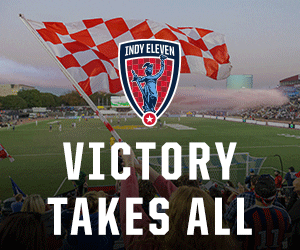Joy Mason, owner of Optimist Business Solutions, was concerned with the inequities she saw both in the professional world and the community at large.
In the aftermath of George Floyd, she considered ways she could make a difference for women and the Black community.
Mason had earned her Six Sigma Black Belt from Purdue University while working at Lilly. She decided she could share this knowledge and these opportunities with other women who looked like her. Thus, the Six Sigma Racial Equity Institute (SSREI) was born in 2021.
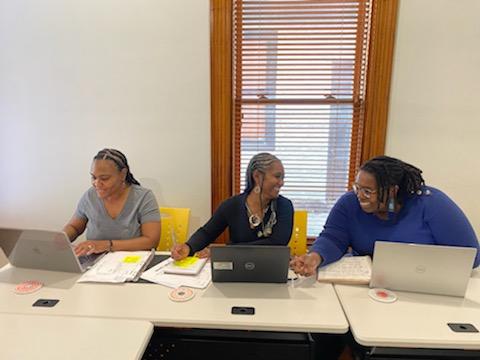
SSREI is “an innovative leadership program designed to upskill Black women and Black Latinas to be complex problem solvers,” according to the organization’s website.
Six Sigma is a method of improving processes to increase profit and customer satisfaction, according to the International Six Sigma Institute. With origins in manufacturing, the goal of Six Sigma was to reduce defects in production.
Members of each SSREI cohort participate in a class taught by a master Black Belt and receive coaching from Black Belts to guide them in completing a community project using their new skills.
“Becoming Six Sigma certified can be an effective way to gain experience in project management and advance your career,” according to Indeed.
People trained in Six Sigma gain skills that are often seen as valuable to employers. Along with that, there could be promotions and the potential for higher pay.
The changing face of Six Sigma
Historically, the Six Sigma certification was not widely available to people of different ethnic backgrounds. Mason was determined to change that.
“If you look at the portrait of those who were the founding fathers of Six Sigma, (they were) white males,” said Christi Martin, owner of Harmony Associates. “Then you look at the portrait of 2024, (and you see) Black and brown women doing it. Joy is so passionate about transforming that picture so that everybody sees this is where we were (and) this is where we are.”

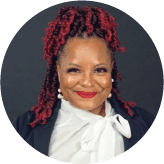

As of January 2025, four cohorts of Black women and Black Latinas have graduated with their Green Belts since the institute’s founding.
“I just thought I was going in to get a new skill and I came out with so much more,” cohort 2 graduate Brittany Marcus said. “(It’s) a community, a group of supporters and just people that feel like family.”
Martin stays connected to SSREI as a mentor for the current Green Belt cohort. She also assists Mason with leading the Yellow Belt training program.
“I migrate toward amazing Black women so being a part of the Six Sigma Racial Equity Institute has allowed me to do that,” Martin said.
Being surrounded by other Black women who were continuing their education and working toward new opportunities was motivating for Aisha Cargile. She joined the first SSREI cohort.
“I’m with a group of women that inspire me, and I hope that I inspire them.” – Aisha Cargile
“I’m with a group of women that inspire me, and I hope that I also inspire them. We were showing each other opportunities that were out there and encouraging each other,” Cargile said.
The sisterhood extends beyond the certification program. SSREI offers professional development throughout the year in topics such as salary negotiation, executive presence and overcoming impostor syndrome. Mason often invites previous participants to networking events, breakfasts, dinners and mixers.
“I love how Joy keeps us connected,” Marcus said.
New skills, new opportunities
“I’m a lifelong learner,” Cargile said of her reason for joining the first cohort. “I love to learn new things and when I heard about this program, it’s not something that I ever thought I’d be able to do. When Joy Mason and Denola (Burton) discussed what a Six Sigma is and what a Green Belt learns, I was all for it.”
Cargile said, “‘Data-driven decision-making’ is one of those phrases that now sticks in my head because of this course.”
In the past, she said there were times when her decisions were driven by her emotions, but this skill set has helped her to make the most strategic decisions possible, to fully understand problems and identify solutions.
Martin was a member of the third SSREI cohort. Before earning her certification, she had some familiarity with Lean Six Sigma concepts. While she was still in the program, Martin began using the skills and tools she was learning right away.
“As I was going through the program, it just really allowed me to be able to understand all the tools and utilize those systems that were going to be really applicable to my current role,” Martin said. “Halfway through the classroom session, I was already seeing how much of an asset this Green Belt was going to make me to my team.”
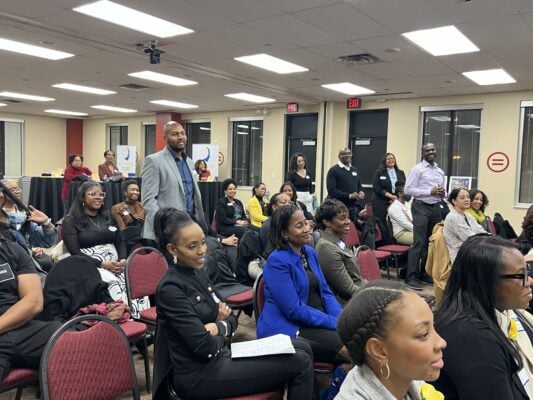
Martin just accepted her first board appointment, and she is looking forward to using her Green Belt to help improve processes within the organization. She said boards are looking for the same skills as other companies, like how to best use their funds and streamline processes.
Cargile was interviewing for a new role within her company as she was finishing her certification. When she mentioned she was earning her Green Belt, she said she felt a “shift in the dynamic” in the interview.
“I think the mood in the room changed because (they saw) this is somebody who actually wants to contribute and is looking for how they can bring value to the organization,” said Cargile, who is now a senior technical support engineer at Salesforce. She feels like her new role is more than just a job, it’s a career.
Marcus earned her Green Belt in SSREI’s second cohort. As the Talent Engagement Manager for Indianapolis Public Schools (IPS), Marcus said she can now look at data and strategize differently than she ever had before.
“It really makes my work super intentional,” Marcus said. “So, when I’m fostering a sense of belonging or whether I’m hosting an event, it makes me look at the data and it makes me do my research a little bit different to make sure that I’m driving the appropriate results.”
Credentials with confidence
Gaining knowledge was the priority, but earning the credential was also important for Cargile. It meant people did not have to take her word for it when it came to what she could offer. She said earning this certification felt as good as earning her MBA.
“I know impostor syndrome is a phrase that gets thrown around a lot, but it’s a very real thing,” Cargile said. “Having the credentials behind you allows you to stave that off and have confidence in what you know and what you’re providing the world.”
Before this certification, even with her degrees and years of experience in her field, Martin did not always feel like her input was valued.
“I can have a seat at the table, but they also let me talk and they listen.” – Christi Martin
“I can have a seat at the table, but they also let me talk and they listen,” Martin said. “I may have known what I was talking about before the credentials, but now that I have them, you’re going to actually let me talk and listen, and then I’m not drowning underwater trying to get you to hear me and trying to get you to see me.”
Changing the world one project at a time
Cargile said the program offers much more than the skills and tools learned through Six Sigma Training. To earn their certification, members of each cohort are tasked with successfully completing a project that will help advance equity in their community.
“One of the benefits of this program is that when you start it, you are immediately shown the impact that you can have.”
Learning how she could make a difference in her own backyard was powerful, Cargile said.
“I can have an impact on a community (or) on an organization,” Cargile said. “I can multiply my passion and provide something to other people. That, just as much as the letters behind my name, brings me a warm feeling.”
Cargile’s project involved increasing the number of Black people in information technology jobs. Looking at how to get the “most impact for the lowest effort,” Cargile found ways to connect with organizations that could reach the targeted demographic to get the word out about available positions in the field.
“That was the problem,” Cargile said. “We weren’t presenting the opportunities for tech positions to people of color.”
Because of what she learned doing this project, she has since changed how she spoke to people about their careers. It was all about getting the right information to the right people, she said.
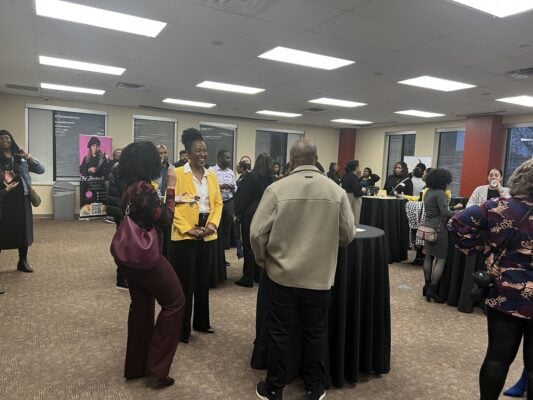
Marcus also learned new problem-solving skills from completing her project. She worked on improving communication with parents and families of IPS students. The objective was to reduce the amount of returned mail IPS received from parents and caregivers.
Through the completion of her project, Marcus learned that due to some families moving and not having the current address on file, they were not receiving communication through the mail. Making the switch to communicating via text solved multiple problems at once: reducing the cost of wasted postage on returned mail and reaching families right away with important information about their students.
“It’s that simple,” Marcus said. “Everyone has a cell phone. Even if you’re on government assistance, you can have one of those free phones and you can receive a text message. (They) might not be able to receive a piece of mail, and they don’t have to lie about where their address is because they have that communication on their phones.”
The text message communication has continued to this day, Marcus said proudly.
Martin’s project was working with young Black males who had been involved in the juvenile system. Their goal was to connect them with community programming to reduce recidivism.
“Being a part of that program and giving those young men an opportunity first to know that they matter so that they can be invested in the resources and the program that gave them a second chance was really rewarding,” Martin said.
Utilizing Six Sigma to contribute to their community is part of the bigger picture. Cargile said SSREI started because of Mason’s passion, but it has grown because other people are able to see the benefits of it. She said there is still more room to grow.
“This is something that can change the world for the better…” – Aisha Cargile
“This is something that can change the world for the better because every participant does a community project,” Cargile said. “What if we could have a thousand people across the U.S., one cohort at a time, in different spaces with different people? Can you imagine the community impact we could have?”
For more information on the Six Sigma Racial Equity Institute, visit sixsigmaindy.org.
Contact editor-in-chief Camike Jones at camikej@indyrecorder.com or 31-762-7850.
Camike Jones is the Editor-in-Chief of the Indianapolis Recorder. Born and raised in Indianapolis, Jones has a lifelong commitment to advocacy and telling stories that represent the community.







